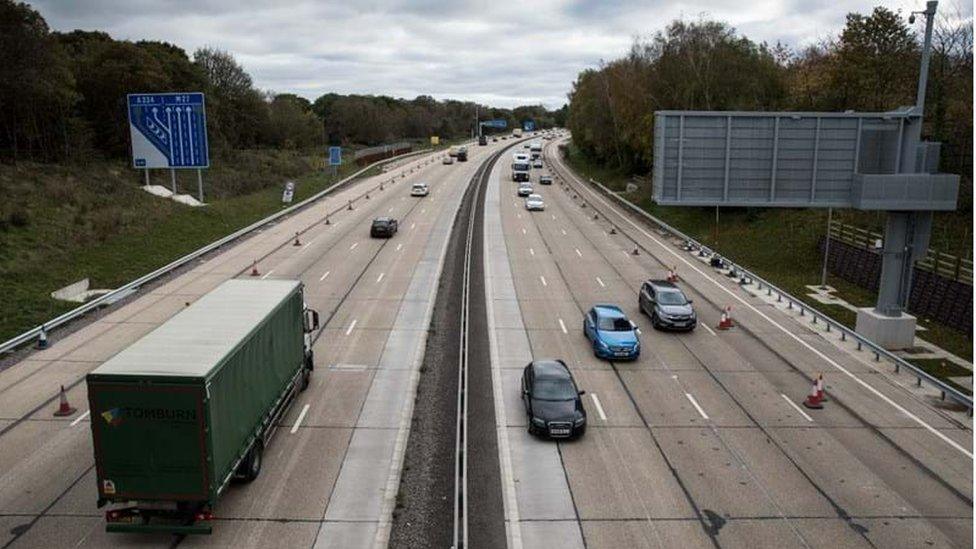M27 resurfacing work at heart of £83m upgrade starts
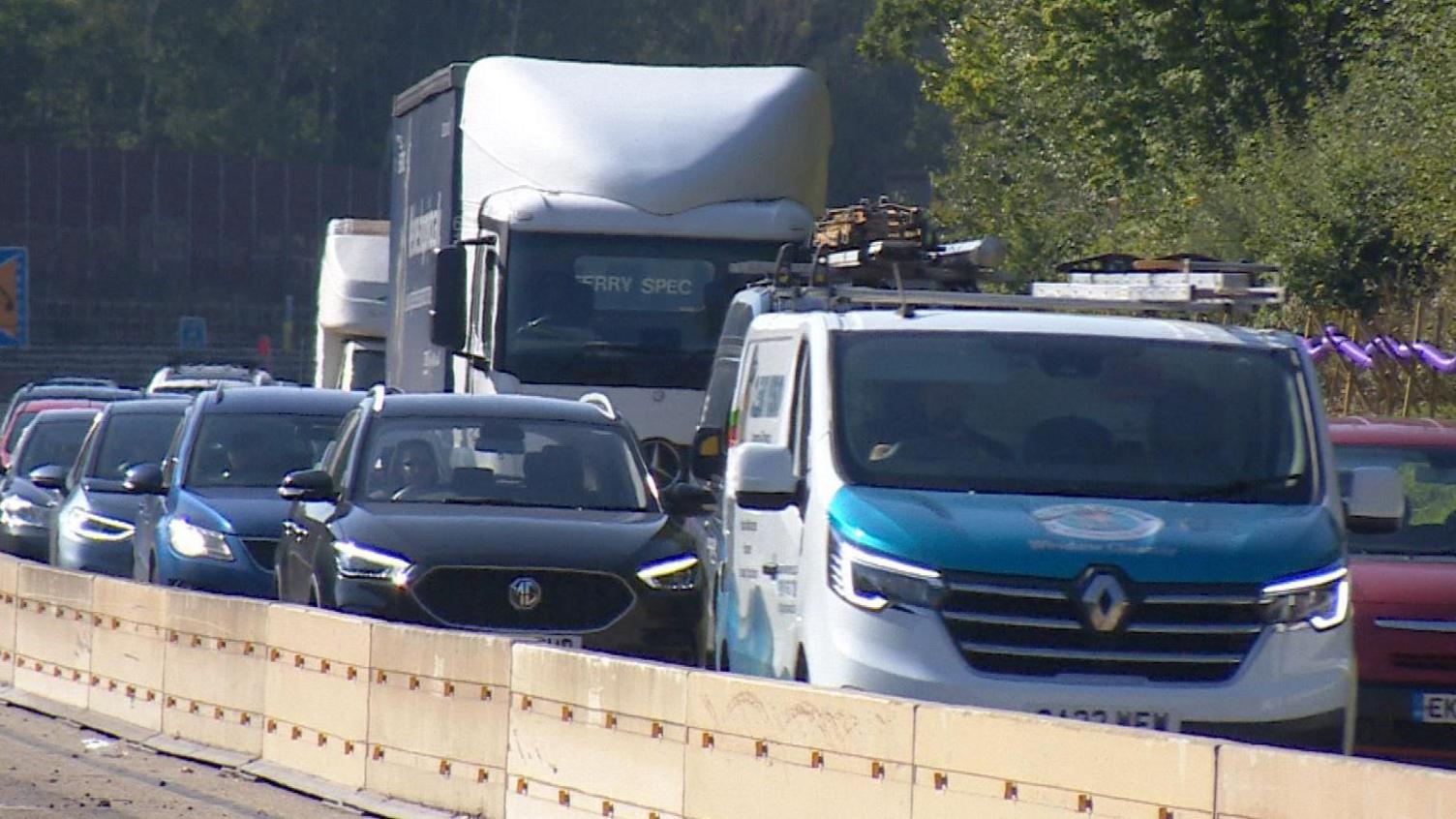
About 120,000 vehicles a day use the M27 - far more than it was designed to handle
- Published
Resurfacing work has started on the M27 motorway around Southampton, as the central part of a two-year, £83m upgrade that has brought delays for drivers.
About 120,000 vehicles a day use the motorway - far more than it was designed to handle.
It is almost the last section of concrete motorway in the region.
The cheaper, noisier surface was chosen following the 1973 oil crisis, when black bitumen was expensive and in short supply.
The work today looks very different from when the motorway was built, 50 years ago.
Then, nobody wore a hard hat. Men - they were all men - toiled bare-chested in jeans. No hi-vis orange jackets or trousers, no safety glasses or gloves, unprotected even when using heavy machinery.
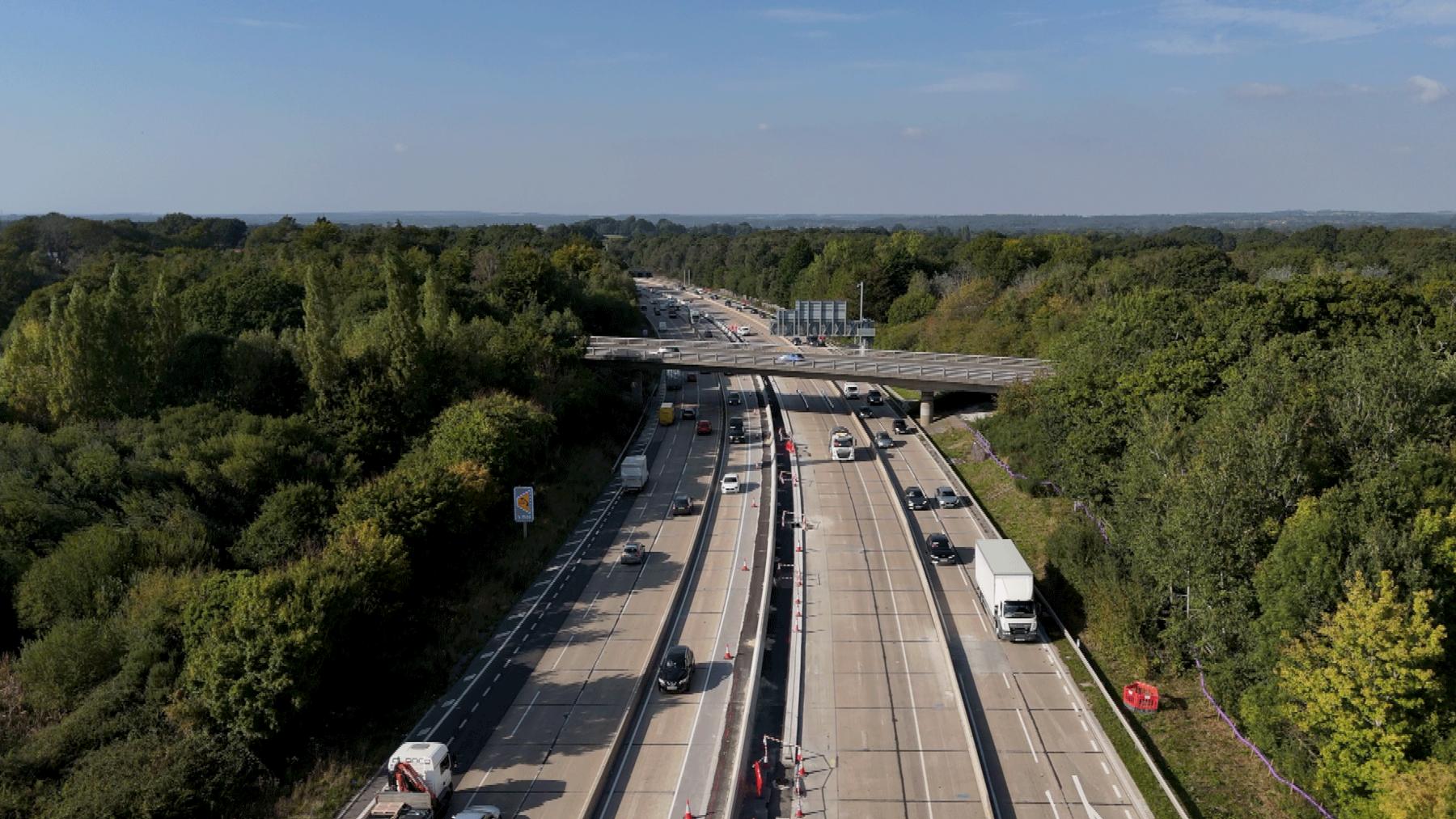
The M27 is almost the last section of concrete motorway in the region
Before the M27, the narrow bridge under the railway at Swaythling was a bottleneck for long-distance traffic.
The idea of a south coast motorway had started in the 1930s. It was to run from Kent to Cornwall.
But the money ran out. Only 30 miles were built, from Havant to the edge of the New Forest.
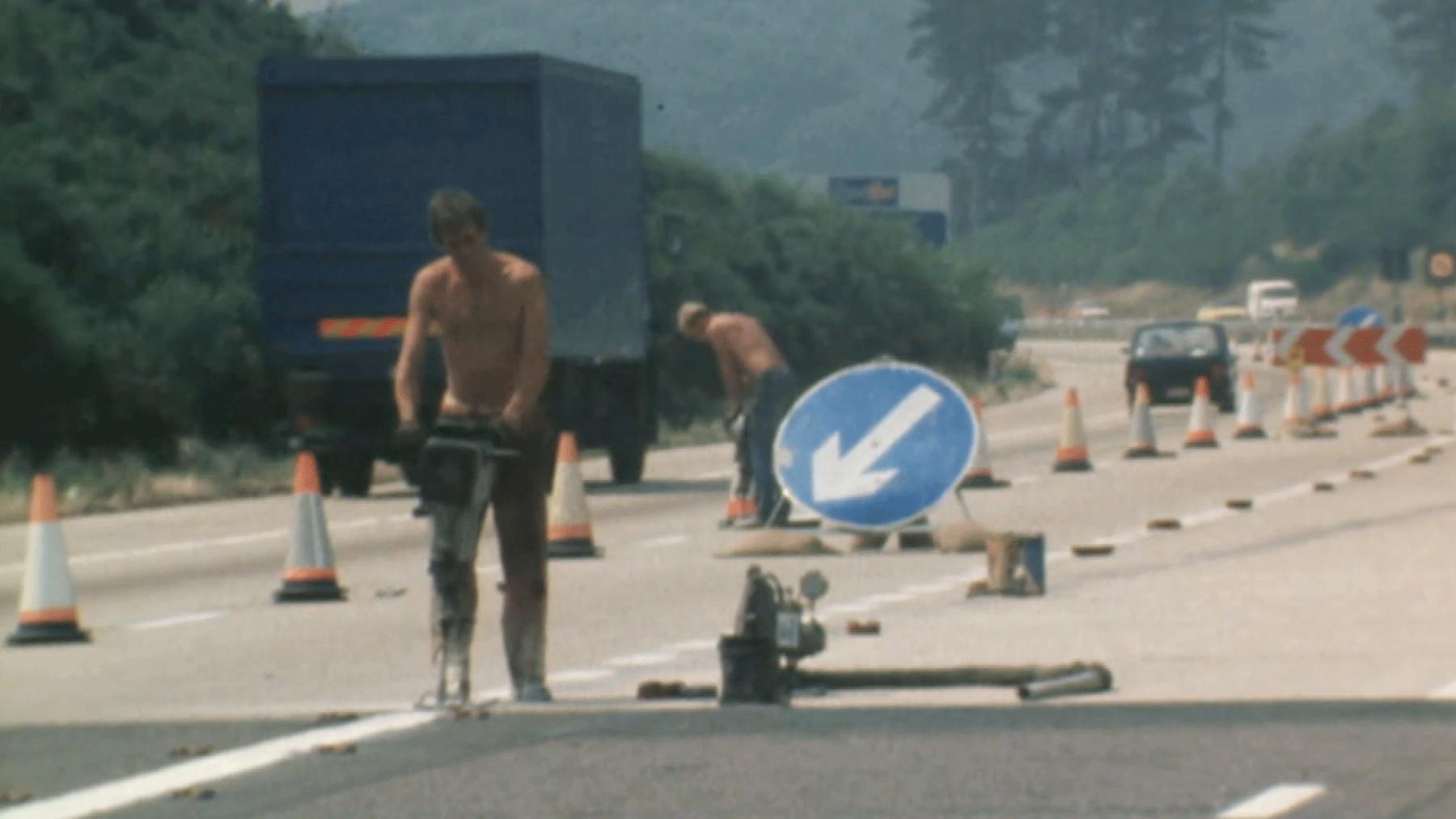
No hard hats or hi-vis orange jackets were in sight when men in jeans helped build the M27
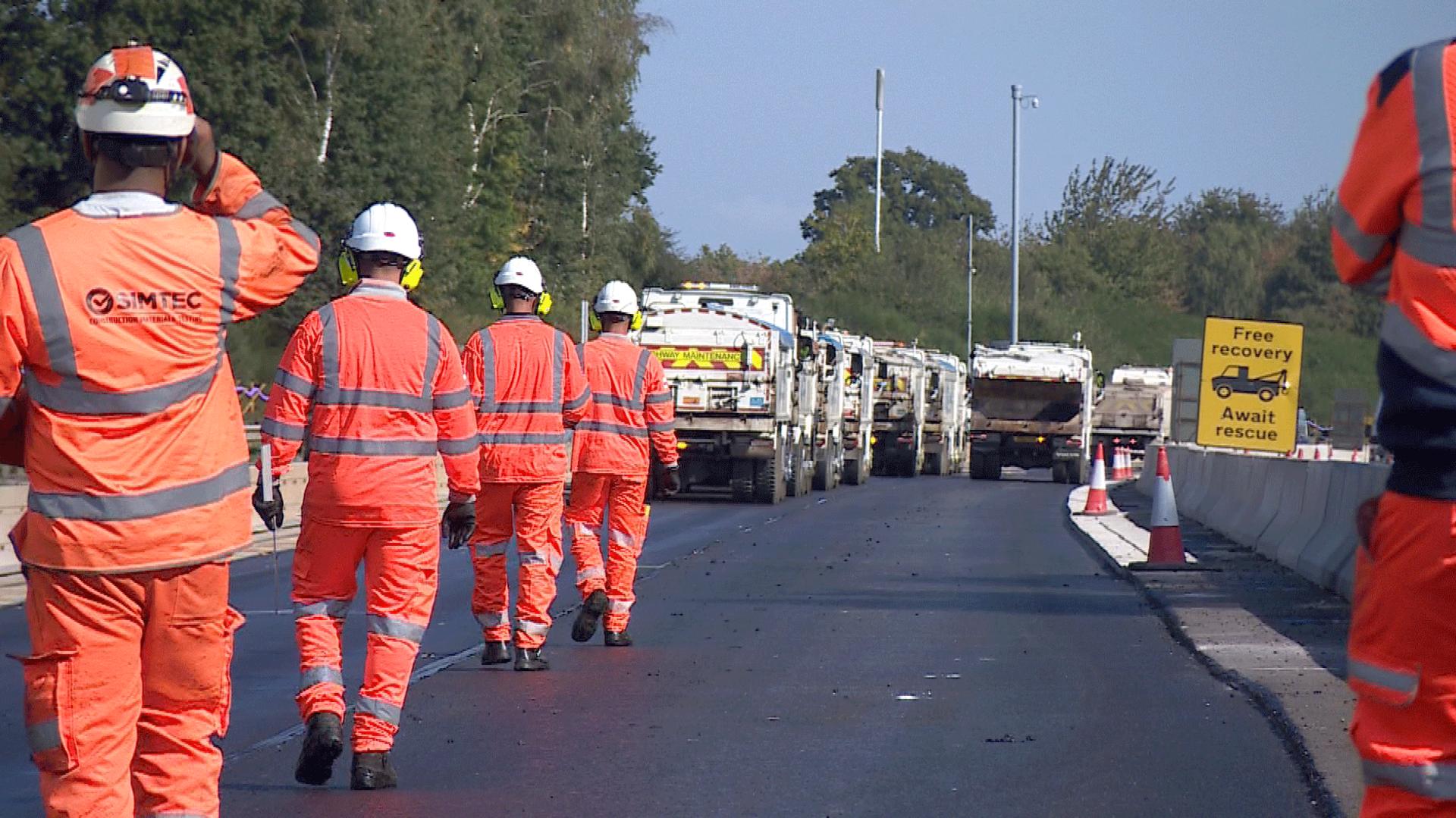
Fashions and safety measures have changed over 50 years
After four decades of discussion, then 10 years of construction, the section west of Southampton was finished first.
Then came Portsmouth, built round the northern edge of the harbour.
The section near Eastleigh cut across the southern end of what was then called Eastleigh Airport.
BBC South Today presenter Bruce Parker was the first to drive it.
He told viewers at the time: "I do think some of us are going to be surprised when we come to the point where the runway ends. Certainly planes taking off and landing look rather close to me."
Bruce was right. In 1993, a private Cessna Citation jet overshot the runway and landed on the motorway, hitting three cars. It burst into flames. The two people on board were unhurt.
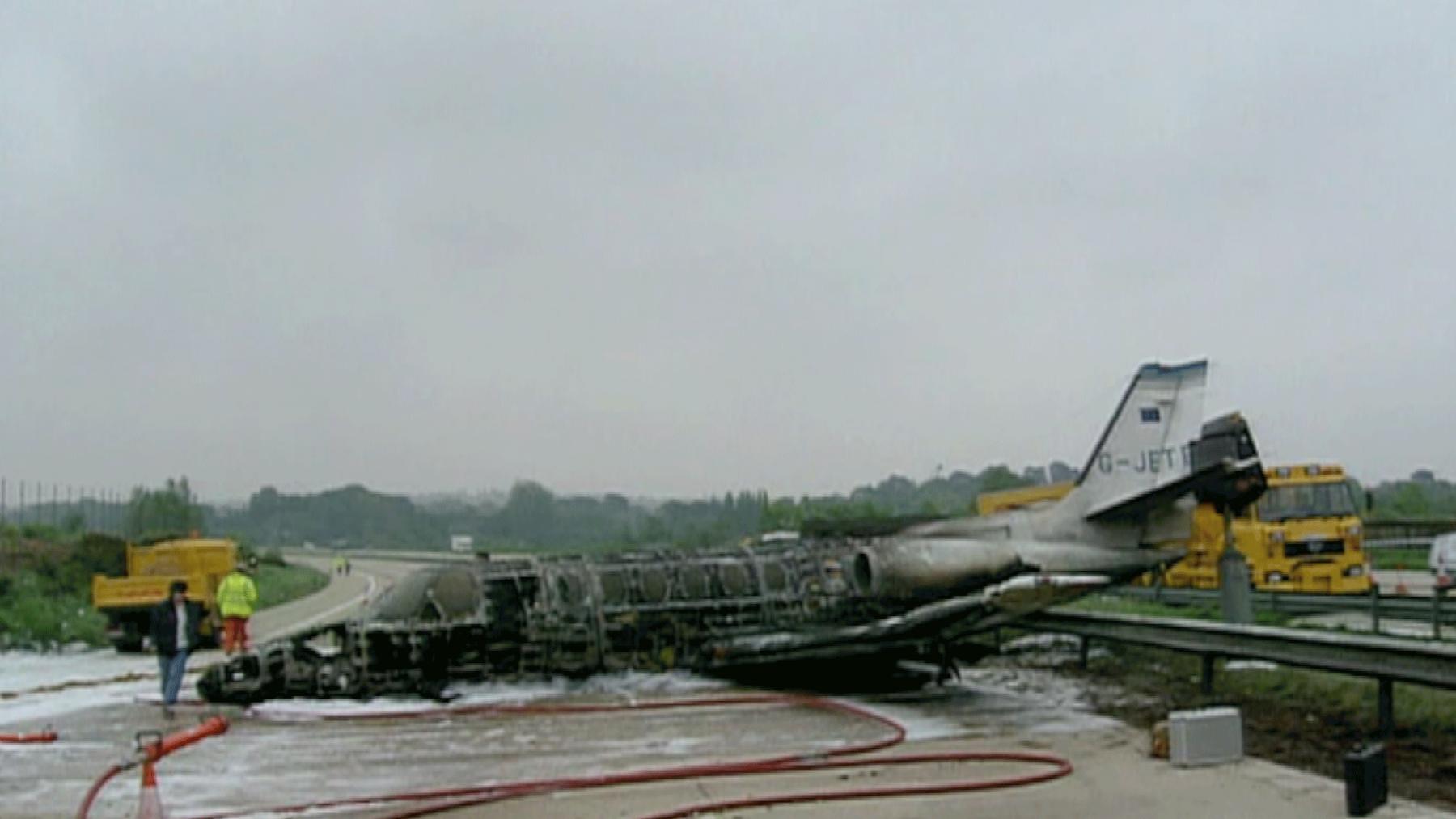
A Cessna Citation jet overshot a runway and landed on the motorway in 1993
Today, with a new concrete barrier separating the traffic, and average speed cameras restricting drivers to 50mph, it looks very different.
"We're overlaying the tarmac onto a binder that's going on top of the existing concrete," explained Derek MacMillan, senior works manager for the contractor, Morgan Sindall. "Up to 150 people are working in shifts, night and day.
"The job's going to go on until spring next year."
The binder allows for the old concrete underneath to expand and contract as the weather changes.
The road will be 18cm thicker as a result.
"We will end up with a quieter drive," promised Richard Scrase, programme manager for National Highways. "And less impact to the motorway's neighbours.
"This will be good for the next 40 years."
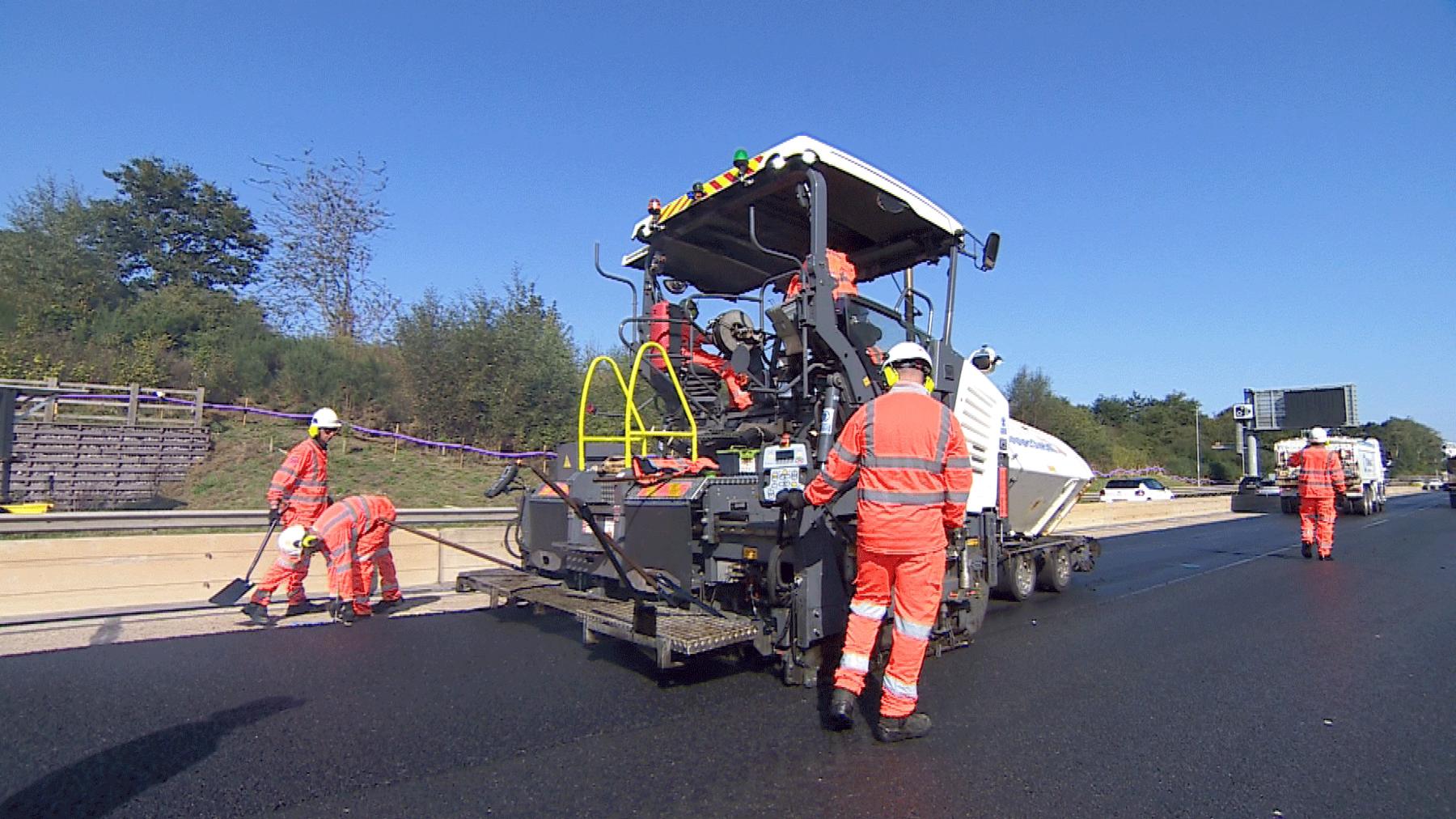
Motorway users will end up with a quieter drive thanks to the upgrade
The M27 changed the face of southern England. Whole communities and business parks have been built, only because the motorway is here: Hedge End, Segensworth and Whiteley.
Whether we live on the streets it bypasses, sit in its traffic jams on the way to work, or buy goods delivered in giant lorries from Southampton docks, the impact of the M27 on all our lives is profound.
Now its concrete surface, laid in an earlier period of austerity half a century ago, is finally disappearing.
Get in touch
Do you have a story BBC Hampshire & Isle of Wight should cover?
You can follow BBC Hampshire & Isle of Wight on Facebook, external, X (Twitter), external, or Instagram, external.
- Published18 March 2024
